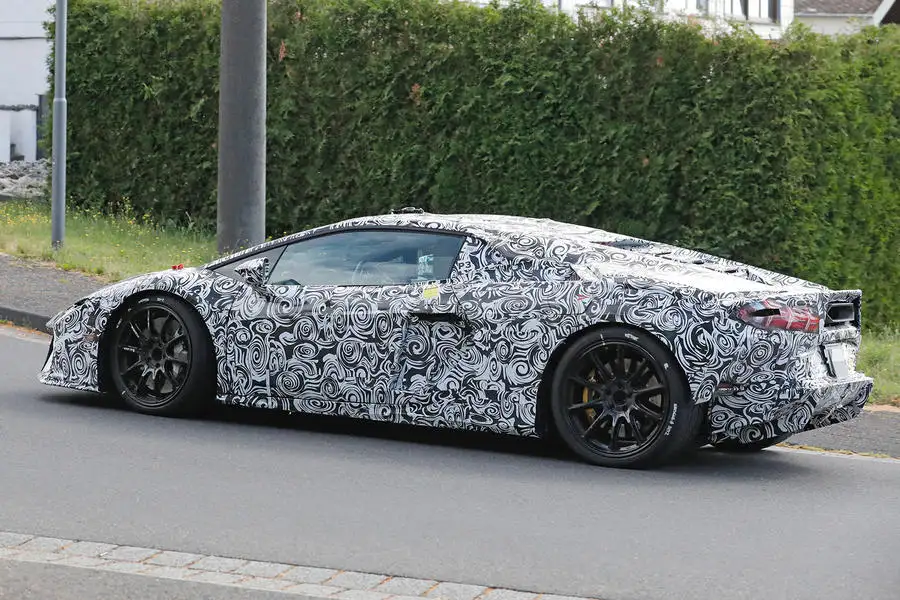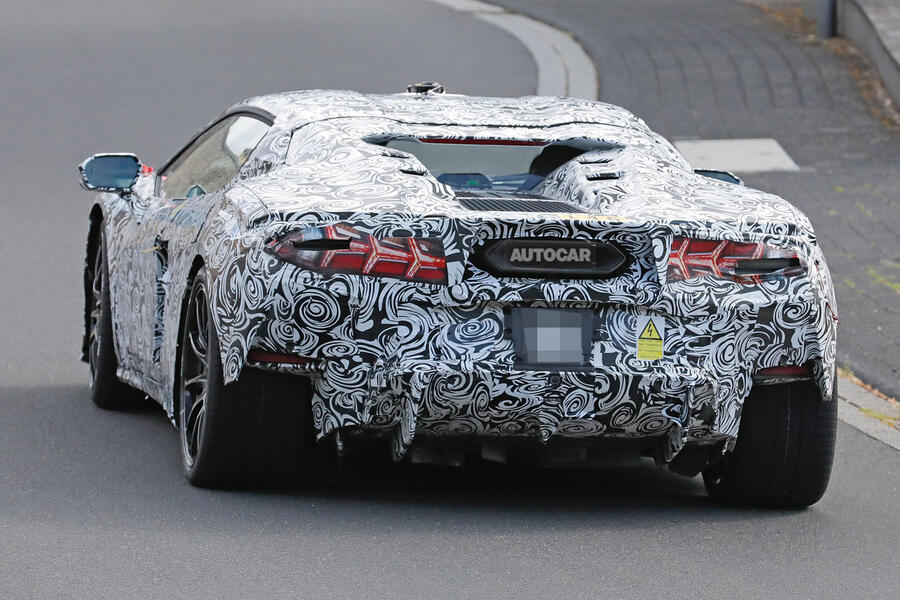Move to hybrid from atmo V10 is set to bring new dynamic character, torque vectoring and distinct power delivery
The successor to the Lamborghini Huracán will be launched in August, swapping its trademark naturally aspirated V10 for a plug-in hybrid powertrain.
That powertrain will be based around a new V8 that has been engineered in-house, rather than taken wholesale from sibling firm Audi.
When it arrives in August – a date confirmed to Autocar by Lamborghini's head of sales and marketing Federico Foschini – the supercar will complete the Italian firm’s all-electrified model line-up, joining the flagship V12 PHEV Lamborghini Revuelto and just-launched Lamborghini Urus SE.
The move to PHEV for the Huracán successor is because “the package itself it’s much better than a normal ICE carâ€, Foschini said, adding: “There are characteristics that you cannot achieve if you don't have an electric motor [such as active torque vectoring]; it gives you the opportunity to leverage even more on the potential of the engine.â€
Visually, the new supercar will be clearly related to the flagship launched earlier this year. It will have a dramatic silhouette that adheres to head of design Mitja Borkert’s ‘spaceship’ ethos, as well as a raft of cues that have become Lamborghini hallmarks, including a gaping hexagonal exhaust, Y-shaped LED light designs and prominent air channels throughout the body to boost downforce.Â
The basic principles of the ‘monofuselage’ carbonfibre monocoque introduced with the Revuelto are also expected to be carried over. However, the abundance of expensive composites used in the flagship supercar’s structure are unlikely to be shared by the junior model.
Instead, it’s set to use cheaper aluminium where possible, without incurring a major penalty to rigidity, in line with its more entry-level billing. The rear subframe is already aluminium on the Revuelto, but the front end could follow suit on the junior supercar, for instance.
This philosophy of reserving exotic materials for key structural elements would match that used for the Huracán and Audi R8. They featured a carbonfibre ‘backbone’ – the central tunnel and rear bulkhead – but used mostly aluminium elsewhere.
The platform will also be shortened to visually distinguish the new car from the 4947mm-long Revuelto. For reference, the run-out Huracán Tecnica is 4567mm long.
The move to the monofuselage chassis also enables the electrification of the Huracán successor.Â
Lamborghini hasn’t yet said whether the junior supercar’s V8 is related to the Urus’s 4.0-litre twin-turbo arrangement. However, given the need to cultivate a highly distinct character and offer a markedly different driving experience, it’s likely that the Huracán successor’s engine will be a highly bespoke proposition, irrespective of its fundamental specification.

Lamborghini called on Oxford-based specialist Yasa to supply its slimline axialflux electric motors for the Revuelto, in the interests of saving weight and boosting power efficiency, and this format could be reprised for the smaller supercar.
However, it remains to be seen whether the Huracán’s successor will also feature two motors on the front axle, plus a third integrated in the gearbox, as in the 1001bhp Revuelto.
It’s also unclear whether Lamborghini still plans to offer rear- and four-wheel-drive variants.
The motors will be fed by a small, lightweight battery – possibly the same 3.8kWh pack used by the Revuelto – situated in the same central spine of the chassis and giving an electric-only range of fewer than 10 miles.
More important than the slight gains in homologated fuel economy and emissions will be the dynamic benefits of such a set-up. The Revuelto deploys its three motors to great effect: torque vectoring at the nose helps to neutralise the supercar’s handling, while the rear motor masks the effects of the highly strung V12 bogging down at low revs.

The ability to ‘torque fill’ in this way has prompted speculation that the Huracán successor’s engine will be biased towards high revs. This would make it similar in character to the Revuelto’s naturally aspirated V12, which doesn’t deliver its full 814bhp until a screaming 9250rpm.Â
Lamborghini will build the Huracán successor on the same production line as the Revuelto. It will be the first time that the brand has built both of its supercars in series, on the same line – facilitated, no doubt, by the sharing of major architectural and electrical components.



